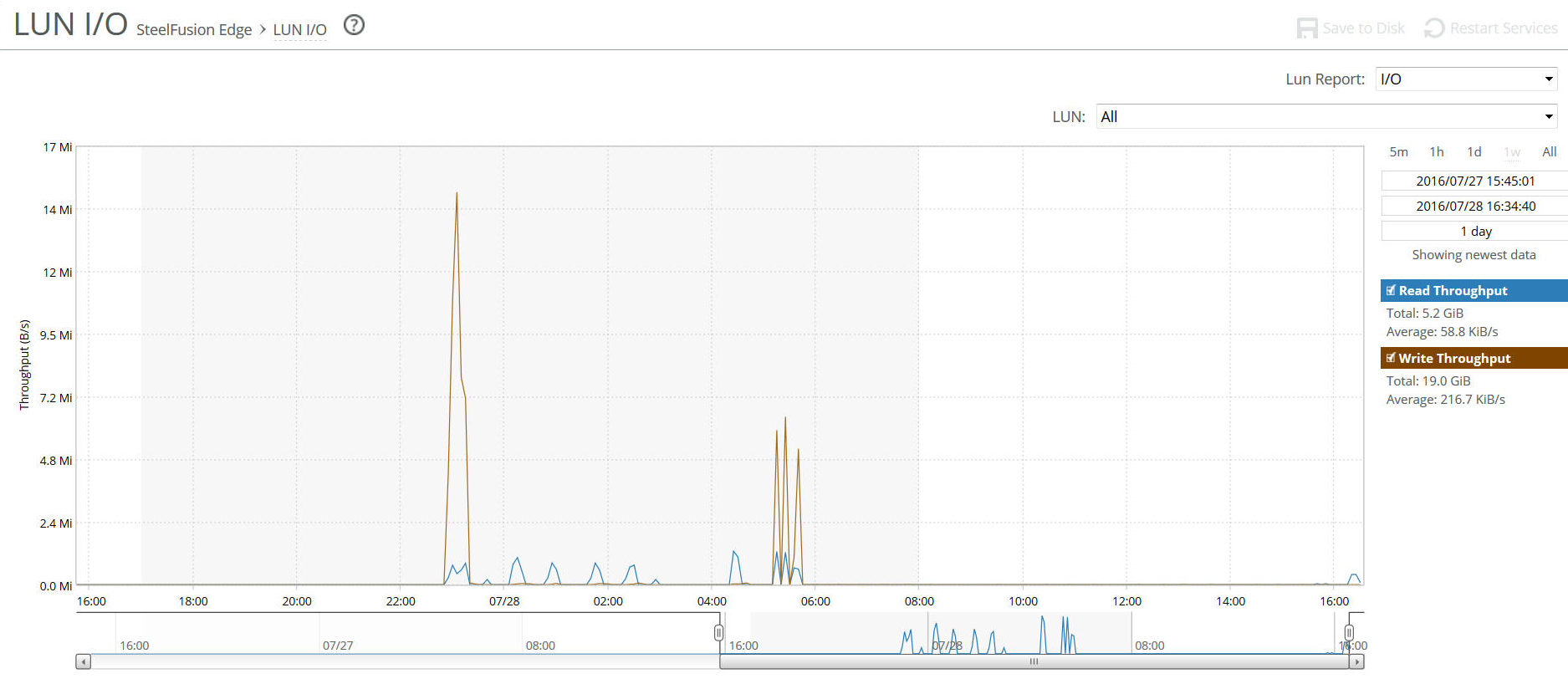About the LUN I/O report
The LUN I/O report summarizes the standard I/O data traffic read from and written to the selected LUN for the specified period of time. Each Edge requires a dedicated LUN in the data center storage configuration. The LUN report contains these statistics that summarize LUN I/O activity:
Read Throughput
Displays the total data read latency from the Core-side LUN(s).
Write Throughput
Displays the total data write latency to the Core-side LUN(s).
The LUN I/O report answers these questions:
• How many mebibytes (MiB) have been written to and read from the selected LUN for the specified period?
• How many operations have been written to and read from the selected LUN for the specified period?
• What are the average read and write latencies for the selected LUN for the specified period?
About report graphs
Mouse over a specific data point to see what the y values and exact time stamp were in relation to peaks.
About report data
The Riverbed system reports on performance for periods up to one month. Due to performance and disk space considerations, the display granularity decreases with time passed since the data was sampled.
Viewing the LUN I/O report
You view the LUN I/O report under Storage > Reports: LUN I/O.
LUN I/O page

Use these controls to customize the report:
Time Interval
Specifies a report time interval of 5 minutes (5m), 1 hour (1h), 1 day (1d), 1 week (1w), All, or type a custom date. All includes statistics for the last 30 days. Time intervals that do not apply to a particular report are dimmed and unavailable.
For a custom time interval, enter the start time and end time using the format yyyy/mm/dd hh:mm:ss.
Because the system aggregates data on the hour, request hourly time intervals. For example, setting a time interval to 08:30:00 to 09:30:00 from two days ago does not create a data display, whereas setting a time interval to 08:00:00 to 09:00:00 from two days ago will display data.
When you request a custom time interval to view data beyond the aggregated granularity, the data is not visible because the system is no longer storing the data. For example, the following custom time intervals do not return data because the system automatically aggregates data older than seven days into two-hour data points:
• Setting a one-hour time period that occurred two weeks ago.
• Setting a 75-minute time period that occurred more than one week ago.
You can quickly see the newest data and see data points as they are added to the chart dynamically. To display the newest data, click Show newest data.
LUN
Specifies the LUN whose statistics you want to see from the drop-down list or select All to view all LUNs.
LUN Report
Specifies /O, I/O Operations Per Second, or I/O latency from the drop-down list.


